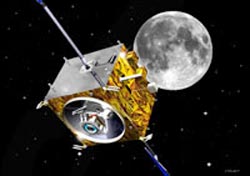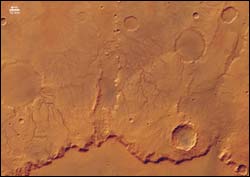This area deals with the fundamental laws and building blocks of nature and how they interact, the properties and the behavior of matter, and research into space and time and their structures.
innovations-report provides in-depth reports and articles on subjects such as astrophysics, laser technologies, nuclear, quantum, particle and solid-state physics, nanotechnologies, planetary research and findings (Mars, Venus) and developments related to the Hubble Telescope.

Exactly what governs the motions of falling paper?
While college students suspect the answer is known to lazy professors — the ones who allegedly grade essays by throwing them down stairwells to see which sails the farthest — the so-called falling paper problem has long intrigued scientists.
Now an enterprising professor and her graduate student at Cornell University have solved the falling paper problem — in part by calculating the motions of a scientific journal p

Technologies from space provide new solutions for food handling on Earth. In exchange travellers in space will get gourmet menus from Earth to cheer them up during long space missions. At the International Food Exhibition SIAL in Paris this week, ESA presents an exchange of ideas between food and space, including recipes for travellers to Mars.
“Every year we research and develop a number of pioneering technologies needed for space exploration. Many have potential for innovative s

From 10 to 14 October the ion engine of ESA’s SMART-1 carried out a continuous thrust manoeuvre in a last major push that will get the spacecraft to the Moon capture point on 13 November.
SMART-1, on its way to the Moon, has now covered more than 80 million kilometres. Its journey started on 27 September 2003, when the spacecraft was launched on board an Ariane 5 rocket from Europe’s spaceport in Kourou, French Guiana. Since then, it has been spiralling in progressively larger orbit

A major step forward for optical sensing technology
Researchers at the University of California, Santa Cruz, have reported the first demonstration of integrated optical waveguides with liquid cores, a technology that enables light propagation through small volumes of liquids on a chip. The new technology has a wide range of potential applications, including chemical and biological sensors with single-molecule sensitivity. “It is an enabling technology that opens up a wide range of

These images, taken by the High Resolution Stereo Camera (HRSC) on board ESA’s Mars Express spacecraft, show the eastern rim of the Martian impact crater Huygens.
The images were taken during orbit 532 in June 2004 with a ground resolution of approximately 70 metres per pixel. The displayed region is centred around longitude 61° East and latitude 14° South.
Huygens is an impact structure, about 450 kilometres wide, located in the heavily cratered southern highlands of

Scattered in universities across Europe, a 250-strong team of students have never collectively met in person, but between them they have built a space-ready satellite. SSETI Express is currently being integrated in an ESA cleanroom for a planned launch in May next year.
Collaboration between the pan-European network of students, universities and experts involved in the Student Space Education and Technology Initiative (SSETI) has been carried out via the internet. Now that the co